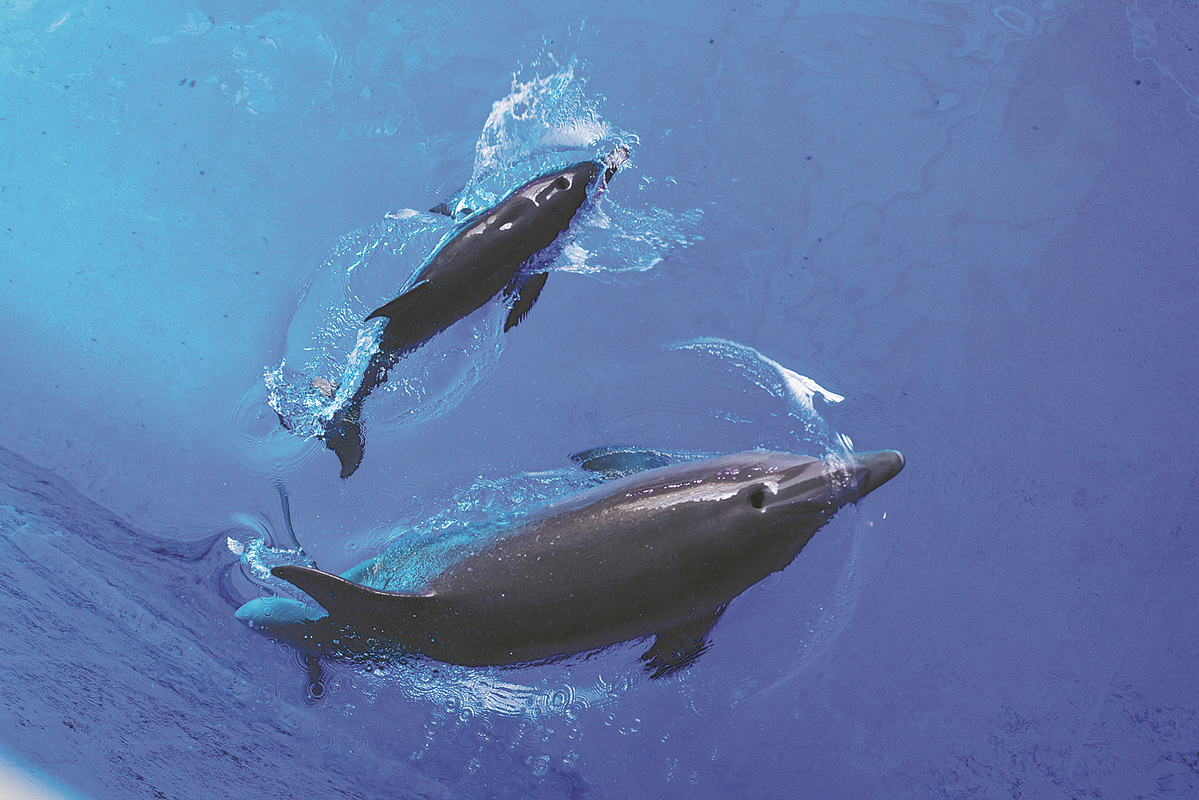A remarkable event took place in South China’s Hainan province as a bottlenose dolphin named Naya, who had not conceived in Europe for 11 years, defied the odds and gave birth to a healthy calf. This successful birth is a significant achievement for the European Endangered Species Program (EEP), marking its first successful birth in China. The Naya’s calf is a female and measures approximately 120 centimeters.
Naya, who is 18 years old, is involved in the animal exchange program of the EEP. Two years ago, the Hainan Ocean Paradise Resort, the sole Chinese member of both the EEP and the European Association of Zoos and Aquariums, established a partnership with Spain to participate in a dolphin exchange program. This program aims to enhance specialized conservation efforts by transferring nine bottlenose dolphins from Europe to China.
Robert Richard Gojceta, the EEP dolphin coordinator, expressed his delight at this milestone achievement and attributed it to the exceptional care provided by the Hainan Ocean Paradise Resort. The resort’s state-of-the-art dolphin facility and professional care have played a pivotal role in ensuring the successful birth.
To ensure the success of the international breeding efforts, the resort enlisted the expertise of Stuart Paul Moore, former director of L’ Aquarium de Barcelona and Parques Reunidos dolphin consultant. Moore has been on-site for over a month, utilizing his extensive experience and professional expertise to facilitate smooth progress in the breeding efforts. He commended the dolphins for thriving in their new environment and credited the resort’s expansive facility, which includes biological filtration systems and round-the-clock care, for contributing to the successful birthing process.
You Yingjie, the director of the Dolphin Pavilion at the resort, emphasized their commitment to comprehensive conservation practices for dolphins. Regular health checkups are conducted by marine animal veterinarians, and pregnant dolphins identified through ultrasounds are provided personalized care in specialized birthing areas. The pregnant dolphins are paired up for companionship during pregnancy, and in the final month before birth, they are individually housed for extra care.
The resort’s chairman, Liu Xiaoou, highlighted their dedication to dolphin conservation, describing their extensive facilities that go beyond mere entertainment. Alongside thousands of tons of water in the outdoor pool area, the resort boasts a semi-indoor dolphin interactive medical platform and a daily conservation space with a 4,000-metric-ton water capacity. Additionally, they have a dolphin sanctuary specifically designed for shelter during typhoons and breeding purposes.
Gojceta commended the Hainan Ocean Paradise Resort for its exemplary commitment to conservation efforts, stating that it sets a high standard for integrating fun with education, scientific exploration, and marine ecosystem preservation. He expressed his optimism regarding the partnership between the resort and the diverse EEP programs, emphasizing the potential for positive outcomes through the collaboration between China and Europe. Liu further revealed their plans to breed seals and penguins, expanding their involvement in the EEP and facilitating exchanges with marine facilities across Europe.
In conclusion, the successful birth of Naya’s calf at the Hainan Ocean Paradise Resort in China represents a significant achievement for the EEP and highlights the resort’s dedication to conservation efforts. Through their partnership and collaboration with European programs, the resort aims to further develop their initiatives and contribute to the thriving of animal populations through global collaborative efforts.

